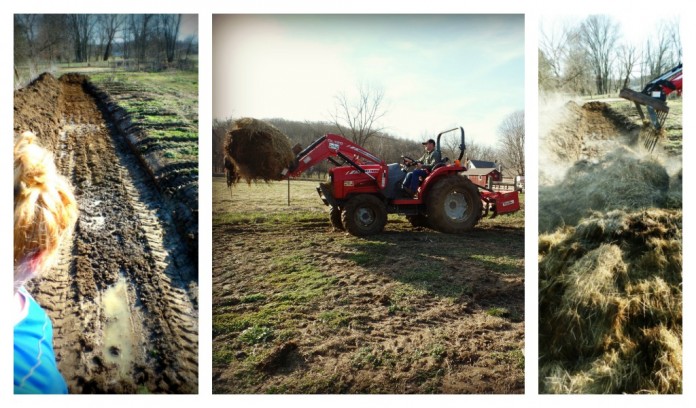
Composting is the process of decomposition that turns organic waste into organic matter. Organic matter, also called humus, is dense with valuable nutrients that enrich soil and help plants grow.
There are several methods of composting. Traditional pile or turning-bin composting are great methods for backyard gardeners and hobby farmers. Apartment and condo dwellers can create vermicompost on a patio or small indoor space. Farmers with an abundance of manure, animal bedding and plant material to dispose of can use trench composting to create a high-volume of rich organic matter for fields and gardens.
Benefits of trench composting
I already mentioned that trench composting is a particularly beneficial practice for farmers with an abundance of farm waste and plenty of space to put it to good use. Another benefit of trench composting is that it creates rich humus without bins or unsightly piles. Trenching is the easiest and lowest maintenance compost method- no turning, temperature monitoring or special equipment required.
Compost materials
A variety of compost materials and a balanced carbon to nitrogen ratio ensures good decomposition, and results in high-quality humus. The beauty of composting soiled animal bedding is that it is already has an adequate carbon to nitrogen ratio for decomposition. Ideal C:N is approximately 25-30:1.
Other carbon and nitrogen sources
Carbon sources: hay, straw, dried plant debris and grass, dead leaves, paper, cardboard
Nitrogen sources: manure, food waste, coffee grounds, blood and bone meal, feathers, hair
Decomposition
Decomposition occurs naturally over time. Healthy soil with plenty of active microorganisms speeds up decomposition. Cold ground or lackluster soil slows decomposition. You can boost the rate of compost decomposition by chopping materials into smaller pieces, or by adding a compost inoculant or accelerator to the materials in your trench.
How to trench compost
- Dig a trench 18 inches deep. The trench can be 1-5 feet wide, depending on your equipment and the volume of waste you are composting.
- Fill trench ¾ full with mixed compost materials.
- Backfill with soil to level.
- Leave an 18 inch path next to the trench.
- Reserve an 18 inch wide row next to path for planting.
- Trench composting is typically accomplished over three planting seasons. The second season, the system shifts as depicted in the graphic. It shifts again during the third season. After three years the rotation is complete.

The chart illustrates 3 years of spring planting for conventional gardeners. Intensive gardeners may condense rotations into 1 ½ years (spring, fall, spring).












Trench composting looks extremely easy and very rewarding. A neighbor down the road just spent thousands on his corn fields. Interested to know what he did if anyone knows. Ground relatively flat. He dug lots of trenches and installed 4″ perforated pipe. Can’t figure out if it is for drainage or watering????? Aurora Indiana 47001 area. My concern was they were not very deep so when plowing fields I see these being a huge obstacle. Any comments or links would shed light on this. Thanks and keep the information moving…